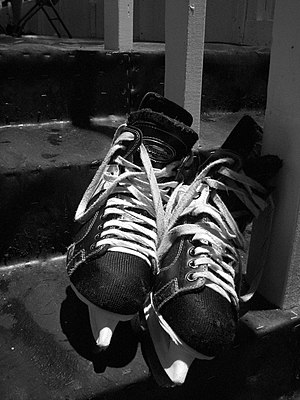 |
| (Photo credit: Wikipedia) |
Dr. Tina Boucher, foot specialist in Meriden, CT treats athletes and sports enthusiasts on a regular basis. Your feet play the most important role in any activity you do and keeping them safe and healthy will keep you staying active.
Here are a few tips to follow when trying to find the right pair of ice skates:
- First of all, visit a reputable store with employees who know how to fit ice skates. They can help you find a pair appropriate to your level and answer any questions you may have.
- Look for skates made of good quality leather, as they will provide the most support. A more expensive pair will also provide a higher quality of boot and blade.
- If you are just going to skate, stay away from hockey or speed skates unless you plan on learning those sports.
- Avoid wearing bulky, thick socks as it can affect finding the proper fit.
- Keep in mind that skates often run a half-size smaller than shoes. Skates should fit snugly but you should be able to wiggle your toes.
- Lace them up in the store properly to get a true feel for how they fit. When you flex your foot forward, you should be able to fit two fingers into the back of the boot.













